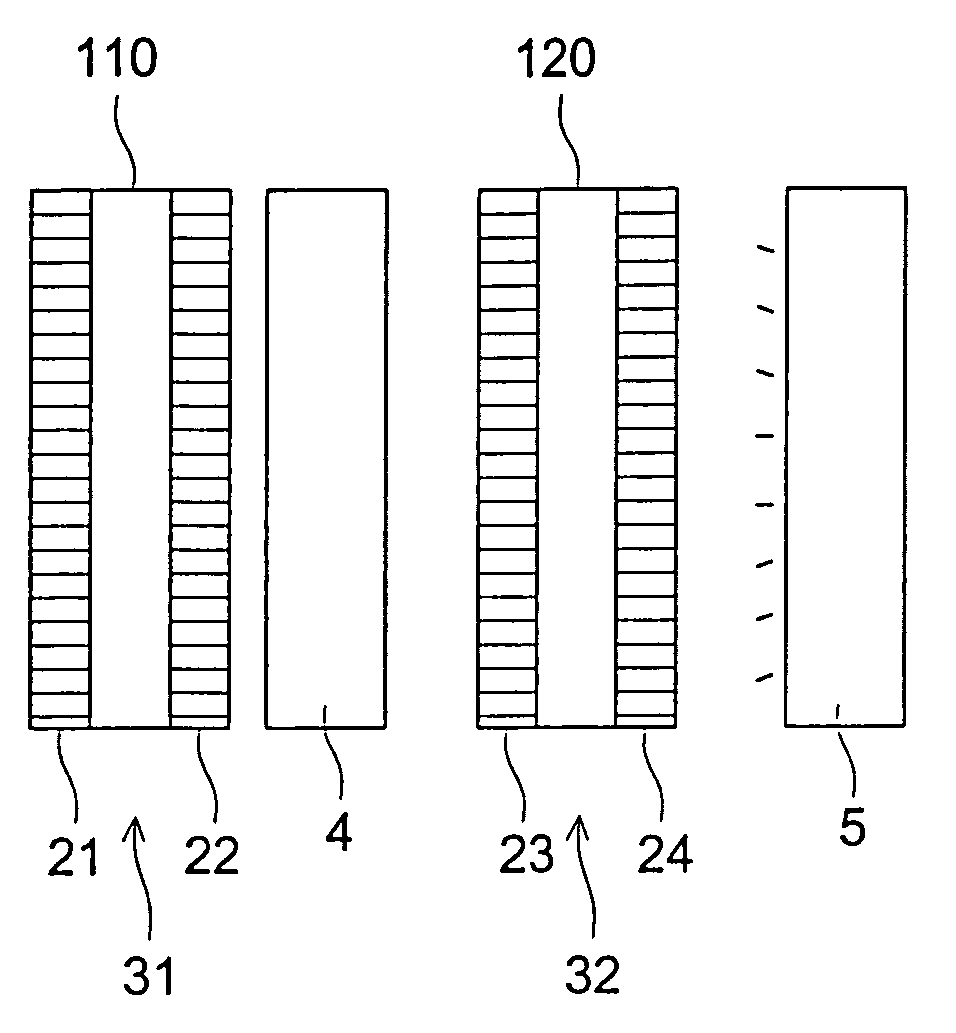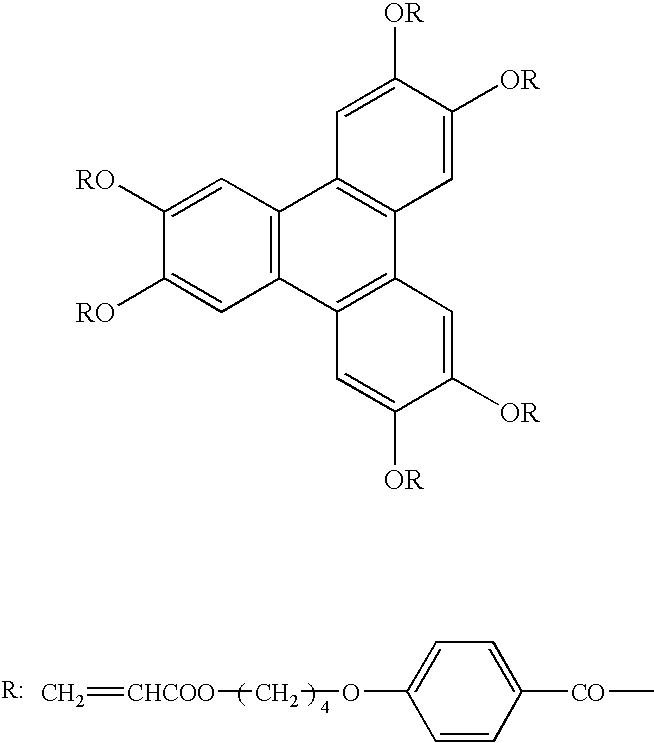Optical film and liquid crystal display using the same
a liquid crystal display and optical film technology, applied in the direction of instruments, polarising elements, other domestic articles, etc., can solve the problems of reducing the viewing angle, difficult to produce acceptable color images in tn, and largely unsolved viewing angle problems, so as to improve the viewing angle without increasing the thickness, minimize problems, and improve the effect of viewing angl
- Summary
- Abstract
- Description
- Claims
- Application Information
AI Technical Summary
Benefits of technology
Problems solved by technology
Method used
Image
Examples
example 1
(Preparation and Evaluation of Fatty Acid Cellulose Ester Film)
[0160]The compositions described below were placed in a tightly sealed pressure vessel, heated to 80° C., and completely dissolved while stirring under a pressure of 500 kPa, while maintaining said temperature.
[0161]
Cellulose acetate propionate (CAP)120weight parts(substitution degree is described in Table 1)2-(2′-hydroxy-3′,5′-di-t-butylphenyl)1weight part(UV absorber)Ethyl phthalyl ethyl glycolate (plasticizer)4weight partsFine silica particles (AEROSIL 2000.1weight partmanufactured by Nihon Aerosil Co., Ltd.)(0.016 μm)Methyl acetate300weight partsEthanol45weight parts
[0162]The resulting dope was cooled to 40° C., while the pressure was reduced to normal pressure. The dope set aside overnight, and was then subjected to a deforming process. Thereafter, the resulting solution was filtered, employing Azumi filter paper No. 244, manufactured by Azumi Roshi Co., Ltd. The resulting dope was cooled and maintained at 35° C., a...
example 2
(Preparation and Evaluation of Liquid Crystal Display)
[0178]Film No. 1 of Example 1 was treated with an aqueous 2.5 mol / liter sodium hydroxide solution at 40° C. for 60 seconds and subsequently washed with water for 3 minutes. Thus an alkali-treated film, in which a saponified layer was formed, was obtained.
[0179]Subsequently, a 120 μm thick polyvinyl alcohol film was immersed in 100 weight parts of an aqueous solution containing one weight part of iodine and 4 weight parts of boric acid, and then stretched to 4 times original length at 50° C. by a factor of 4 at 50° C. Thus a polarizing film was prepared. A polarizing plate was prepared by adhering said alkali-treated film onto both surfaces of the resulting polarizing film, employing a 5 percent aqueous totally saponified type polyvinyl alcohol solution as the adhesive. No. 1 Liquid Crystal Display was obtained by providing the resulting polarizing plate on both surfaces of a VA type liquid crystal cell.
[0180]Liquid Crystal Displa...
example 3
(Evaluation of Fatty Acid Cellulose Ester Film)
[0185]Films No. 1, 5, and 6 were subjected to measurement and evaluation employing the methods described below. Table 4 shows the results.
[0186]Transmittance of light having a wavelength of 550 nm was measured employing a spectrophotometer (U-3400 manufactured by Hitachi Seisakusho).
(Moisture and Heat Resistance)
[0187]Two film sheets were prepared by blanking a film. A polyurethane adhesive was applied to one surface of the resulting film sheet. Then a polarizing film was prepared by adhering the resulting sheet onto both surfaces of a polarizing element (30 nm) comprised of polyvinyl alcohol and dichroic dyes. The thus obtained polarizing film was cut into 100×100 mm squares, and was adhered onto a glass plate, employing a acryl based adhesive, and stored at 80° C. and 90 percent relative humidity for 1,000 hours. Thereafter, the peeling state of said film was observed and the degree of coloration or chromaticity (“b” va...
PUM
| Property | Measurement | Unit |
|---|---|---|
| thickness | aaaaa | aaaaa |
| thickness | aaaaa | aaaaa |
| thickness | aaaaa | aaaaa |
Abstract
Description
Claims
Application Information
 Login to View More
Login to View More - R&D
- Intellectual Property
- Life Sciences
- Materials
- Tech Scout
- Unparalleled Data Quality
- Higher Quality Content
- 60% Fewer Hallucinations
Browse by: Latest US Patents, China's latest patents, Technical Efficacy Thesaurus, Application Domain, Technology Topic, Popular Technical Reports.
© 2025 PatSnap. All rights reserved.Legal|Privacy policy|Modern Slavery Act Transparency Statement|Sitemap|About US| Contact US: help@patsnap.com



